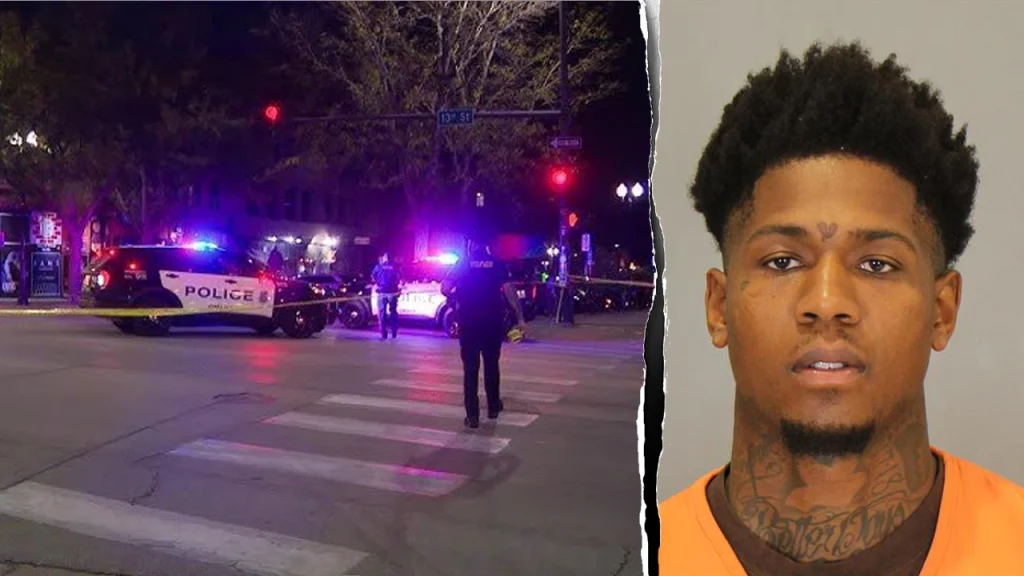The Human Cost of Early Release: A Closer Look at Clemency Consequences
In a troubling case that has reignited debate over criminal justice reform, 31-year-old Khyre Holbert stands accused of possessing a firearm linked to multiple violent crimes across Nebraska—just months after having his 20-year federal sentence for gun and narcotics offenses commuted through a Biden administration clemency initiative. Holbert, who had served only about seven years of his original sentence, was arrested following an October 4 shooting in Omaha’s Old Market district. Investigators allege he discarded a loaded handgun fitted with a high-capacity magazine while fleeing officers. This case has become particularly controversial because Holbert’s early release came despite explicit warnings from the U.S. Attorney’s Office about his gang affiliations, extensive criminal history, and previous weapons convictions. Law enforcement groups have expressed outrage, with the Omaha Police Officers Association noting Holbert was “no stranger to the law” and Attorney General Pamela Bondi describing the situation as “a failure to hold criminals accountable.”
This isn’t an isolated incident. In March 2025, Alabama authorities arrested Willie Frank Peterson, another beneficiary of the same clemency wave, on new drug and gun charges merely months after his release. Peterson had served over a decade of a 20-year sentence before being among the 2,490 inmates freed on January 17, 2025, through Biden’s clemency actions. These cases highlight the tension between reform efforts aimed at addressing perceived injustices in sentencing and the public safety concerns that arise when individuals with established patterns of criminal behavior return to society. Michael Rushford, founder and president of the Criminal Justice Legal Foundation, argues that by the time offenders reach federal prison, most have already exhausted their “second chances” in the justice system. “It’s hard to get into federal prison,” Rushford explained. “You don’t just commit one crime and go, unless it’s murder. Second chances have been overblown. By the time you get somebody who’s got three or four convictions, the second chances are over.”
Critics of the Biden administration’s approach to clemency point to what they see as fundamental flaws in the process. Rushford questions whether proper vetting occurred, stating, “I don’t think you can delegate clemency. It was never intended that a president delegate that authority. I think what we saw were clemencies being granted without the president’s direct knowledge.” This concern is amplified by internal documents suggesting some top Biden officials themselves questioned how pardons were issued, particularly regarding the use of an autopen rather than direct presidential review. For many law enforcement professionals, these cases represent the predictable outcome of policies that prioritize leniency over accountability. “The people approving these releases weren’t interested in protecting the public from criminals,” Rushford contends, reflecting a sentiment shared by many in the law enforcement community who feel that clemency should be reserved for genuine injustices rather than employed as a broad policy tool or political gesture.
The controversy extends beyond individual cases to broader questions about criminal justice philosophy in America. Rushford attributes these issues to a political climate that he believes has increasingly favored offenders over victims, pointing to movements like “defund the police” as evidence that “there’s a large segment of the political environment that doesn’t agree criminals belong in prison.” He criticizes approaches in some major cities where leaders propose sending counselors rather than police officers to certain crime scenes, calling such policies “ridiculous” and dangerous. The real-world consequences of these philosophical differences play out in communities across the country, where repeat offenders sometimes commit new crimes after being given multiple opportunities through various reform initiatives. Rushford cites several tragic examples, including the cases of Brianna Kupfer and Iryna Zarutska, both killed allegedly by individuals with extensive criminal histories who were free despite multiple prior offenses.
Looking forward, Rushford expresses hope that the current administration will restore what he sees as necessary rigor to the clemency process. “I don’t see the kind of straight criminals being let loose like Biden had done,” he said. “I hope the Trump Justice Department raises the integrity level and makes sure we’re not letting out hardened criminals and drug traffickers.” He believes the current Justice Department is “very engaged in fighting crime and reducing drug trafficking” and represents “a different regime making those decisions.” This perspective reflects broader political divisions about the proper balance between punishment and rehabilitation, between protecting society and offering redemption to those who have broken the law. These are not simply academic debates but decisions with profound consequences for public safety and individual lives.
Unfortunately, Rushford suggests meaningful reform often requires tragedy to catalyze public attention. He recalls how the 1993 murder of 12-year-old Polly Klaas by a repeat offender led to California’s “three-strikes” law, speculating that “it’s going to be one of those horrible cases before the country wakes up” to problems in the current system. While acknowledging that change will take time—”It didn’t come this way overnight, and it’s going to take a while to get rid of it”—Rushford emphasizes that victims of repeat offenders “are not going to be comforted by the fact that in 20 years, we’re going to get this straightened out.” As cases like Holbert’s continue to unfold, they raise essential questions about the meaning of justice in a complex society. “Second chances sound good,” Rushford concludes, “but you have to earn them. You don’t just get them because a politician wants to look compassionate.” The challenge remains finding a balance that recognizes both the possibility of human redemption and the paramount importance of public safety—a balance that has proven elusive across administrations and generations.


